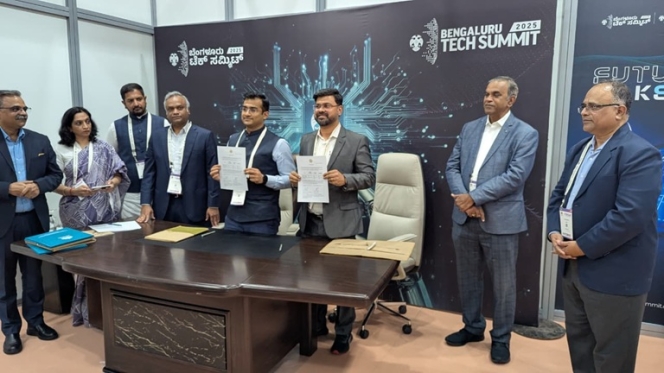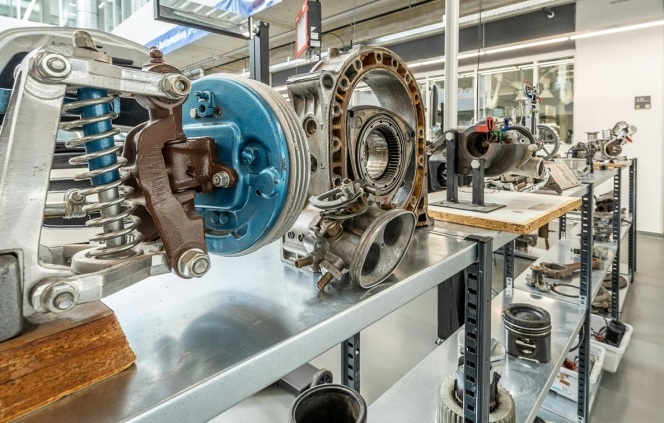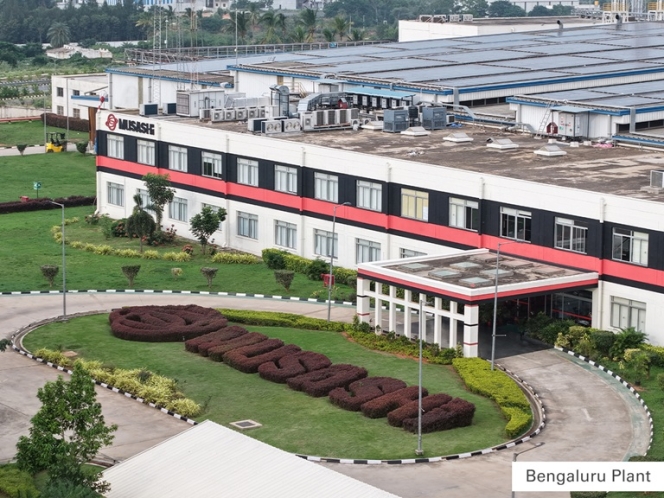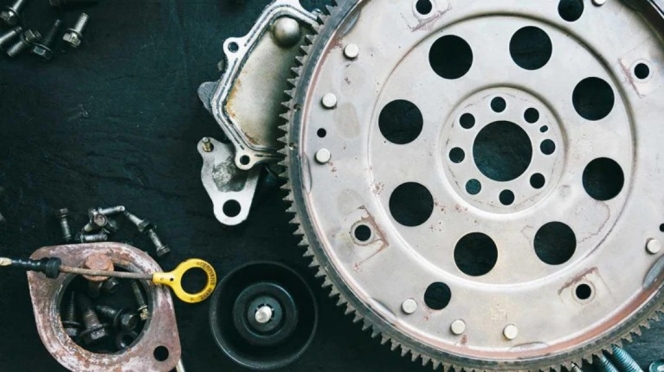- Automotive Component Manufacturers Association of India
- ACMA India
- Vikrampati Singhania
- JK Fenner (India)
- Shradha Suri Marwah
- Sriram Viji
- Brakes India
- Vinnie Mehta
Vikrampati Singhania Is ACMA’s New President, Sriram Viji President Designate
- By MT Bureau
- September 15, 2025

L-R: Vikrampati Singhania and Sriram Viji.
The Automotive Component Manufacturers Association of India (ACMA), the apex body representing the Indian auto component industry, has appointed Vikrampati Singhania, Managing Director, JK Fenner (India), as President, ACMA for the 2025–26 term.
He succeeds Shradha Suri Marwah, who had been leading ACMA for the president. In addition, Sriram Viji, Managing Director, Brakes India, is the next President Designate.
Vinnie Mehta, Director General, ACMA, said, “The appointment of Vikrampati Singhania as President and Sriram Viji as President Designate comes at a decisive moment for our industry. The auto component sector is navigating geopolitical volatility, supply chain realignments, and accelerating electrification. Their proven leadership will be invaluable in steering ACMA’s agenda on strengthening India’s global competitiveness, securing critical raw materials, and fostering R&D and innovation. I am confident that under their stewardship, ACMA will further our industry’s vision of building a resilient, sustainable, and future-ready mobility ecosystem.”
Vikrampati Singhania, said, “It is a privilege to lead ACMA at a time when India is rapidly emerging as a trusted global partner in mobility value chains. With exports crossing record highs and EV adoption reshaping the market, our task is to strengthen resilience and competitiveness. We must deepen localization, invest in advanced technologies, and embrace sustainability as a core business imperative. Together, with the government’s continued support and our industry’s commitment, we will work towards making India not only self-reliant but also a global leader in the next generation of mobility components.”
Tsuyo Manufacturing To Build EV Powertrain Plant And Testing Track In Karnataka
- By MT Bureau
- November 20, 2025

New Delhi-based EV powertrain startup Tsuyo Manufacturing has signed a Letter of Intent (LoI) with the Government of Karnataka to establish a new manufacturing plant and a large testing track for commercial vehicles in the state. The LoI was formalised at the Bengaluru Tech Summit 2025.
The new facility will focus on the design and production of heavy-duty EV powertrain systems for commercial and industrial applications. Key components to be developed and manufactured include: Electric Motors (across various topologies including IPMSM, ACIM, SRM, SynRM, and Axial Flux). E-Drives, E-Axles and Automatic Transmissions (AT), Integrated 2-in-1 and 3-in-1 Powertrain Solutions and Complete Powertrain Assemblies for heavy commercial EVs.
The facility will also include a dedicated Testing Track for the field testing and validation of buses, trucks, mining vehicles, and other heavy-duty EVs.
The plant's manufacturing capacity will range from 0.5 kW to 250 kW, with extended capability up to 600 kW through partnerships with CETL and LvKON.
The initiative is intended to strengthen India’s domestic manufacturing capabilities for high-performance EV powertrain systems, reducing reliance on imports. By producing motors, e-axles and integrated solutions, the facility will support the growth of India's commercial EV markets, including bus, truck and mining vehicles. The project is expected to create direct and indirect employment and boost industrial development in the state.
Vijay Kumar, Founder and CEO, Tsuyo Manufacturing, said, “This LoI marks a pivotal moment for Tsuyo and for the future of India’s EV ecosystem. Karnataka has always been at the forefront of innovation and advanced manufacturing, and we are proud to partner with the state to establish a facility that will redefine powertrain excellence for heavy commercial electric vehicles. With this investment, we aim to deliver world-class, reliable, and locally manufactured powertrain solutions that will power India’s transition to sustainable mobility.”
Priyank Kharge, Minister for Rural Development & Panchayat Raj, IT & Biotechnology, Government of Karnataka, said, “We are delighted that Tsuyo Manufacturing has decided to expand its Operations in Dharwad, Karnataka. Their decision reinforces our commitment to building a strong, local economy through LEAP (Local Economy Accelerator Program). This project will help building a sustainable ecosystem in the state and will attract more EV companies to come to our state - which is known for its Industry friendly policies and a dynamic EV ecosystem. This investment will not only create high-quality jobs in North Karnataka but also accelerate innovation and green mobility solutions for Karnataka and beyond.”
GST 2.0 And Trade Agreements Set To Reshape India's Auto Component Ecosystem Says Report
- By MT Bureau
- November 19, 2025

India’s automotive industry, which contributes 7.1 percent to the country’s GDP, is set for a transformation driven by regulatory changes, including GST 2.0 reforms, customs duty adjustments and the Indo–Japan Free Trade Agreement (CEPA) said a whitepaper by Grant Thornton Bharat and the Indo–Japan Chamber of Commerce and Industry (IJCCI). It highlights how these factors are reshaping the competitiveness of the USD 74 billion auto component sector.
The rollout of GST 2.0 in September 2025 has streamlined tax structures, boosting consumer demand across vehicle segments.
- Tax Rate Changes: Small cars and motorcycles under 350cc now face an 18 percent GST (down from 28 percent plus cess), leading to price reductions. Premium vehicles, including SUVs and high-end motorcycles, now have a flat 40 percent GST.
- EV Support: Electric vehicles (EVs) continue to benefit from a 5 percent GST rate.
- Consumer Response: Following the rate adjustments, the small car segment recorded a surge in vehicle deliveries, with booking volumes rising by nearly 50 percent.
- Supply Chain Incentives: Union Budget 2025 announced customs duty exemptions on lithium-ion battery scrap and critical minerals like lead and copper to secure raw materials and support the EV sector.
Sohrab Bararia, Partner, India Investment Advisory, Grant Thornton Bharat, said, “The convergence of GST 2.0 and targeted customs incentives marks a defining moment for India’s automotive sector. Reduced tax rates, simplified compliance, and supply-chain-focused exemptions will not only elevate India’s cost competitiveness but also strengthen its positioning as a manufacturing and export hub for Japanese automakers.”
The partnership between India and Japan, supported by USD 43.3 billion in Japanese investments, is deepening through trade agreements and skill development initiatives.
- Trade Agreements: The India–Japan CEPA and the India–Japan Digital Partnership (IJDP) are fostering innovation in EVs, connected vehicles and AI-led manufacturing.
- Skill Development: Initiatives like the Japan-India Institute for Manufacturing (JIM) are training over 30,000 Indian engineers to Japanese manufacturing standards.
- Exports: Car exports from India to Japan reached USD 616.45 million in the first nine months of FY2025.
Suguna Ramamoorthy, Secretary General Indo-Japan Chamber of Commerce and Industry, said, “There is significant partnership between India and Japan in the automotive sector, particularly in the realms of hybrid and electric vehicles, and high-precision components. The Free Trade Agreement (FTA) serves as a crucial catalyst for collaboration, joint research and development, and knowledge transfer, further supported by the India-Japan Industrial Competitiveness Partnership (IJICP). Recent initiatives have greatly advanced our automotive collaboration, especially in clean mobility and advanced manufacturing. The implementation of the GST 2.0 reform stands as a boon to Prime Minister Narendra Modi’s Atmanirbhar Bharat programme, fostering an environment conducive to growth.”
The sustained policy alignment under GST 2.0, customs reforms and deeper utilisation of the Indo–Japan FTA are expected to drive competitiveness and technology transfer, accelerating India’s journey toward an innovation-led automotive future.
Image for representational purpose only: Credit Mike van Schoonderwalt/Pexels
Musashi India Completes Bengaluru Plant Expansion, Annual Output Value To Reach INR 10 Billion
- By MT Bureau
- November 18, 2025

Musashi India, a subsidiary of Japan’s Musashi Seimitsu Industries and a manufacturer of two-wheeler and four-wheeler transmission components, has completed the Phase 2 expansion of its Bengaluru manufacturing facility. The enlarged plant will become fully operational by December 2025.
The strategic upgrade reinforces Musashi’s commitment to India’s automotive and electric mobility sectors. The facility is set to become the Musashi Group's largest integrated manufacturing site under one roof.
The expansion, which adds 11,000 square metres of developed area, boosts the total plant size to 32,000 square metres and introduces new capabilities in forging, machining and heat treatment.
The company has increased production capacity from 4 million to 6.5 million sets of scooter and motorcycle transmissions annually. This move is expected to nearly double output value from INR 5.5 billion to INR 10 billion annually.
The Bengaluru plant will now serve as a hub for both domestic and export markets, catering to multiple categories, including 100–750cc motorcycles, 100–125cc scooters and two-wheeler and three-wheeler e-axles for the internal combustion engine (ICE) and electric vehicle (EV) segments.
The facility incorporates automated technologies such as gear grinding, automated gear checking and camera-based inspection systems, supported by robotic and gantry solutions, ensuring high precision and efficiency. The plant will also function as a prototype and testing hub for ICE transmissions and e-axles.
In line with global environmental, social, and governance (ESG) commitments, the facility features:
- Rooftop Solar: A 2.16 million kWh installation.
- Green Energy: The plant operates with over 96 percent green energy, powered by a mix of hydro, wind, rooftop and captive renewable sources.
These initiatives support Musashi’s global objective of achieving carbon neutrality across its value chain by 2038.
Naoya Nishimura, CEO, Musashi Auto Parts India and Africa Region, said, “The Bengaluru facility expansion marks a significant leap forward in Musashi’s journey of growth and innovation in India. Constructed within just 18 months, it stands as the largest integrated manufacturing facility under one roof within the Musashi Group. This facility embodies our ‘Go Far Beyond’ aim, combining precision engineering, advanced automation and sustainability to create a new benchmark in manufacturing excellence. This development will further strengthen Musashi India’s position as a trusted partner in the global EV supply chain while reinforcing its leadership in next-generation mobility solutions.”
Geopolitical Shifts Set To Boost India's Auto Component Industry To $200 Billion Says McKinsey Report
- By MT Bureau
- November 13, 2025

Geopolitical shifts in global trade are positioning India's auto component industry as a key player in the international supply chain, with projections indicating the sector's value could soar to USD 200 billion (EUR 160 billion) by 2030 said a recent report by McKinsey.
The report suggests that as an estimated USD 12 trillion to USD 14 trillion in global trade is expected to shift across corridors by 2035, India, aided by its cost competitiveness and skilled workforce, is emerging as a primary beneficiary. The Indian auto component industry has already experienced a compound annual growth rate (CAGR) of about 10 percent over the last five years.
The projected growth of the industry is underpinned by a two-pronged strategy focused on both traditional and future mobility technologies:
- Internal Combustion Engine (ICE) Exports: A USD 20 billion to USD 30 billion export opportunity is forecast for ICE components by 2030, as global markets consolidate their supply base.
- Electric Vehicle (EV) Growth: Domestic EV sales are expected to see a sharp 35 percent CAGR, aligning the industry with worldwide electrification trends.
The industry must address key challenges, including reliance on critical components like rare earth elements (mostly sourced from China), capability gaps in advanced technologies, and compliance with new policy shifts like carbon taxes in developed markets.
The analysis proposes two core strategies to lock in long-term value:
- The IGNITE Approach: This focuses on securing a ‘last person standing’ advantage in ICE global play by upgrading supply chains, future-proofing the industry with new technologies, investing in capabilities like global sales expertise, and creating a future-ready workforce.
- The GAIN Approach: This calls for a collaborative effort between Government, Associations, Institutional finance, and a Network effort of MSMEs to address systemic issues and secure access to critical resources and innovation.






Comments (0)
ADD COMMENT